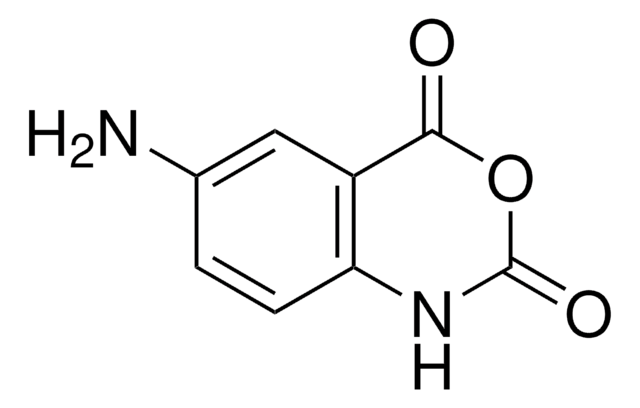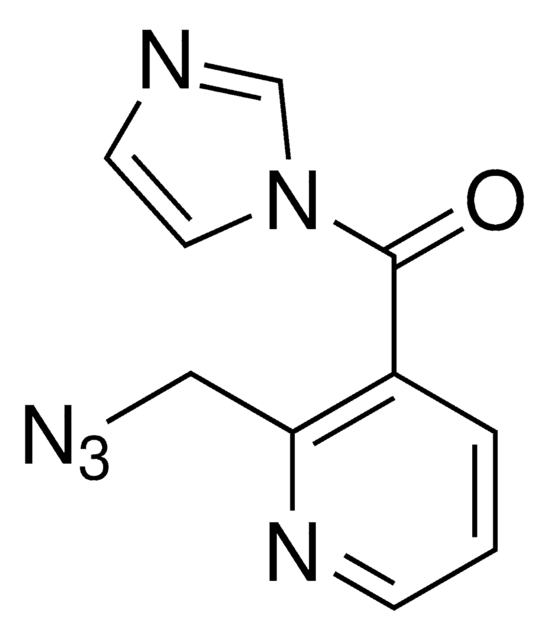908401
1-Methyl-7-nitroisatoic anhydride
Sinónimos:
1-Methyl-7-nitro-2H-3,1-benzoxazine-2,4(1H)-dione, 1-methyl-7-nitro-2H-3,1-Benzoxazine-2,4(1H)-dione, 1M7, RNA SHAPE probe, Reagent for RNA SHAPE-MaP
Iniciar sesiónpara Ver la Fijación de precios por contrato y de la organización
About This Item
Fórmula empírica (notación de Hill):
C9H6N2O5
Número de CAS:
Peso molecular:
222.15
MDL number:
UNSPSC Code:
12352119
NACRES:
NA.22
Productos recomendados
form
powder
mp
204.5 °C
storage temp.
2-8°C
SMILES string
[N+](=O)([O-])c1cc2[n]([c]([o][c](c2cc1)=O)=O)C
InChI
1S/C9H6N2O5/c1-10-7-4-5(11(14)15)2-3-6(7)8(12)16-9(10)13/h2-4H,1H3
InChI key
MULNCJWAVSDEKJ-UHFFFAOYSA-N
Application
1-Methyl-7-nitroisatoic anhydride (1M7) is used as an in vivo SHAPE-MaP reagent for live cell RNA structure analysis at single nucleotide resolution. SHAPE -- or selective 2′-hydroxyl acylation analyzed by primer extension -- uses small, electrophilic chemical probes such as 1M7 to react with the 2′-hydroxyl group and provides insight to RNA structure. When combined with mutational profiling (MaP), quantitative nucleotide measurements are possible for entire transciptomes. Together, these methods deepen the understanding of RNA interactions and regions that may be exploited for design of RNA-targeting small-molecule drugs.
Other Notes
Pervasive Regulatory Functions of mRNA Structure Revealed by High-Resolution SHAPE Probing
SnapShot: RNA Structure Probing Technologies
Detection of RNA-Protein Interactions in Living Cells with SHAPE
Standardization of RNA Chemical Mapping Experiments
In-cell RNA structure probing with SHAPE-MaP
A Fast-Acting Reagent for Accurate Analysis of RNA Secondary and Tertiary Structure by SHAPE Chemistry
SnapShot: RNA Structure Probing Technologies
Detection of RNA-Protein Interactions in Living Cells with SHAPE
Standardization of RNA Chemical Mapping Experiments
In-cell RNA structure probing with SHAPE-MaP
A Fast-Acting Reagent for Accurate Analysis of RNA Secondary and Tertiary Structure by SHAPE Chemistry
Related product
Referencia del producto
Descripción
Precios
Storage Class
11 - Combustible Solids
wgk_germany
WGK 3
flash_point_f
Not applicable
flash_point_c
Not applicable
Elija entre una de las versiones más recientes:
¿Ya tiene este producto?
Encuentre la documentación para los productos que ha comprado recientemente en la Biblioteca de documentos.
Katherine E Deigan et al.
Proceedings of the National Academy of Sciences of the United States of America, 106(1), 97-102 (2008-12-26)
Almost all RNAs can fold to form extensive base-paired secondary structures. Many of these structures then modulate numerous fundamental elements of gene expression. Deducing these structure-function relationships requires that it be possible to predict RNA secondary structures accurately. However, RNA
Scott P Hennelly et al.
Nucleic acids research, 39(6), 2416-2431 (2010-11-26)
Riboswitches are non-coding RNAs that control gene expression by sensing small molecules through changes in secondary structure. While secondary structure and ligand interactions are thought to control switching, the exact mechanism of control is unknown. Using a novel two-piece assay
Matthew J Smola et al.
Biochemistry, 54(46), 6867-6875 (2015-11-07)
SHAPE-MaP is unique among RNA structure probing strategies in that it both measures flexibility at single-nucleotide resolution and quantifies the uncertainties in these measurements. We report a straightforward analytical framework that incorporates these uncertainties to allow detection of RNA structural
Anthony M Mustoe et al.
Cell, 173(1), 181-195 (2018-03-20)
mRNAs can fold into complex structures that regulate gene expression. Resolving such structures de novo has remained challenging and has limited our understanding of the prevalence and functions of mRNA structure. We use SHAPE-MaP experiments in living E. coli cells to
Jacob K Grohman et al.
Journal of the American Chemical Society, 133(50), 20326-20334 (2011-12-01)
Higher-order structure influences critical functions in nearly all noncoding and coding RNAs. Most single-nucleotide resolution RNA structure determination technologies cannot be used to analyze RNA from scarce biological samples, like viral genomes. To make quantitative RNA structure analysis applicable to
Nuestro equipo de científicos tiene experiencia en todas las áreas de investigación: Ciencias de la vida, Ciencia de los materiales, Síntesis química, Cromatografía, Analítica y muchas otras.
Póngase en contacto con el Servicio técnico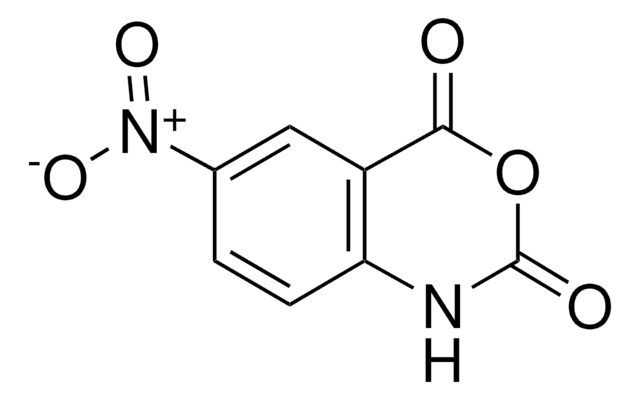
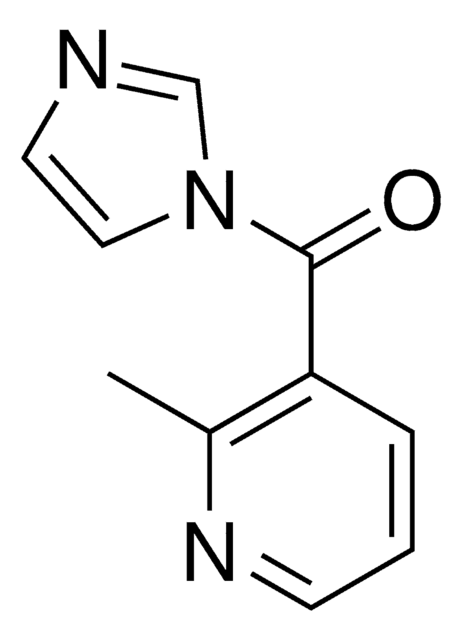
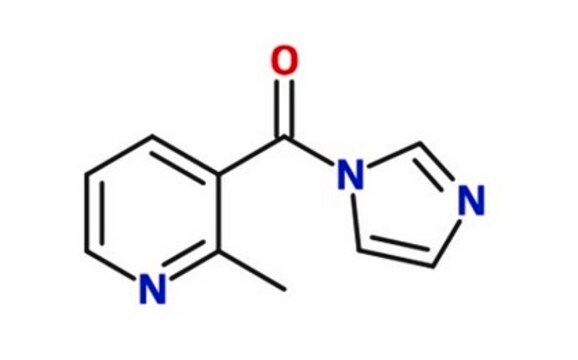
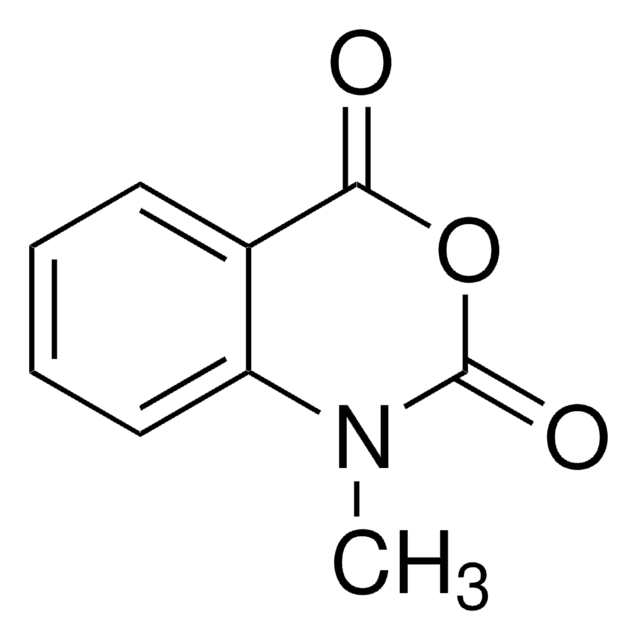
![1,4-Diazabicyclo[2.2.2]octane ReagentPlus®, ≥99%](/deepweb/assets/sigmaaldrich/product/structures/366/129/a6ff4175-974d-4fac-9038-b35e508ef252/640/a6ff4175-974d-4fac-9038-b35e508ef252.png)
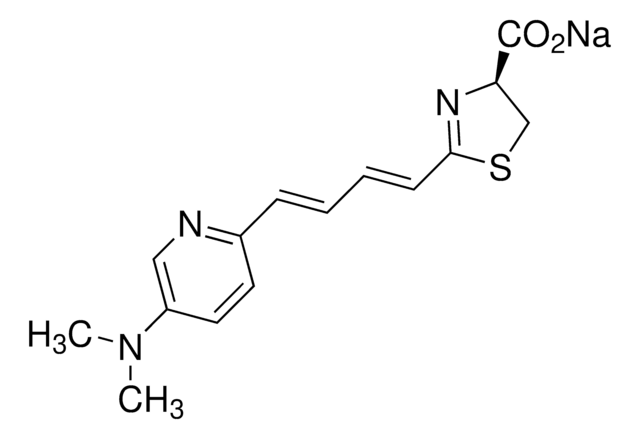
![1,8-Diazabiciclo[5.4.0]undec-7-eno 98%](/deepweb/assets/sigmaaldrich/product/structures/120/564/5b373e23-1624-489c-8efb-692de0f96ffb/640/5b373e23-1624-489c-8efb-692de0f96ffb.png)
